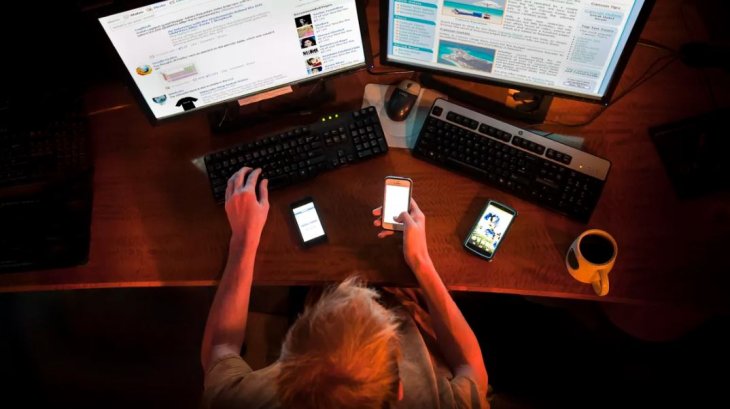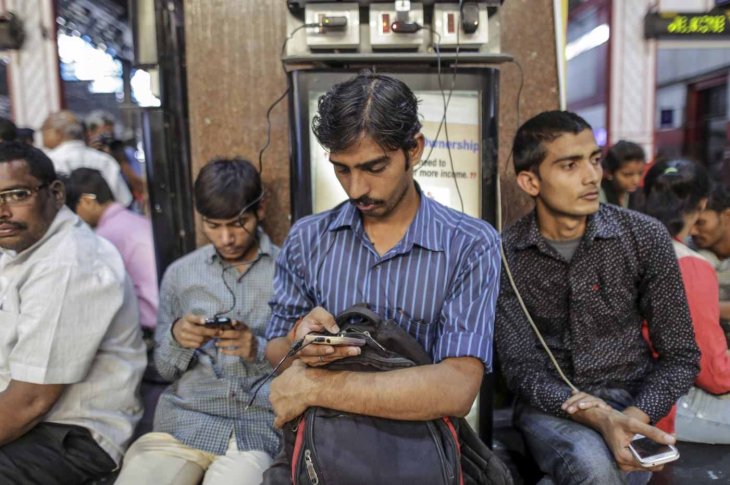Screenome, How You Interact With The Screen Is More Important Than How Long You Spend On Them
Dhir Acharya - Aug 18, 2019

“Screenome,” as it’s called, is not just about the amount of time you spend looking at the screen, but also about what you do during that time.
- How to get a Bangladesh virtual phone number?
- Looking For The Best Non Chinese Smartphone? Check Out This List
- Xiaomi Mi 10i: Made In India, Snapdragon 750G Chip, 5G, 120Hz Display, 4,820mAh Battery, And 108MP Camera
When Apple released Screen Time reports for widgets screen, people were surprised at how much time they spent on their devices, making people be more careful about using their phones. However, the story is also about how they interact with the screen. “Screenome,” as it’s called, is not just about the amount of time you spend looking at the screen, but also about what you do during that time.

Definition
Likely originated from the word “genome,” “screenome,” as defined by scientists, is:

The paper on this term was published in the journal Human-Computer Interaction.
Simply speaking, the screenome is your own collection of screens you see each hour, each day, each week, and each year, which culminates in the screen collection that you see in your entire life.

Researcher Nilam Ram, who contributed to the Screenomics paper, said that the distinction between just viewing screens and actually interacting with them has almost disappeared.
According to Ram, since a lot of today’s screens makes interactivity easier, these two factors have equal importance and screenomics covers both of them through capturing navigating, zooming, and channel switching.
To help you imagine better, think of how you used your smartphone during breakfast in the morning. Did you read the news and check your social accounts like Instagram and Facebook and replying to messages? Did you? Within a minute, you can view a massive amount of content, let alone within a year.

The invention of the screenome
At Standford University, there’s a department named The Screenomics Labs where an expert team, including Ram, specialized in information science and technology, medicine, genetics, family studies, human development, media, and communications worked together to form a sequence of the screenomes of 400 people for their study.
After researchers Ram and Byron Reeves spent a year at the Center for Advanced Study of Behavioral Science at Standford, in 2013, the Screenomics team was created. The two researchers began studying how quickly people switch from one type of content, software, or app to another through the use of sequences of people’s laptop screens’ screenshots.
They found that on average, individuals were switching screens after every 20 seconds.

After asking for a study on the screenomes, US participants across the country volunteered to install the software of the lab on their devices (computers, tablets, and phones) and the software took screenshots one every 5 seconds. The lab’s team received millions of screenshots and used several machine-learning algorithms to obtain meaningful info from the data.
A day has 86,400 seconds, which means the software could take 17,280 screenshots per day from each device. However, the software was optimized to only take screenshots when the device is in use. Then, the team used that intermittent sampling for the reconstruction of what happened along the day.
As of now, the researchers have captured over 25 million screenshots from children and adults in Myanmar, China, and the US. While the database is already vast, the Screenomics team is not done yet, and they are currently trying to analyze the sequences of participants into patterns to come up with a final hypothesis, Ram said.
The meaning of screenome research for health
According to the working hypothesis, screenomes may be tied with certain health conditions. For instance, scientists have found the relationship between the usage of social media and eating disorders and well-being.
Ram's team and himself think that if they have enough data, they can uncover how the way people interact with screens in daily lives can impact on their current mental health status. For example, if someone is in a bad mood or tired, they may scroll through their documents and emails incessantly without really working on anything. However, these patterns are quite idiosyncratic, meaning each person's indicators are different from the other.


What about all the advice and warnings about screen time?
There exists much heterogeneity between screenomes, due to which Ram is not sure causal relationships will show; but in case they do, Ram hypothesizes that advice on screen time will radically change.

What he means is that it's fine and even necessary to give people advice, but health professionals need to guide people from a bigger-picture approach.
Since there haven't been causal relationships yet like between depression and screentime, the researchers cannot give any specific advice, at least not for now. However, there will likely be better advice to help us avoid the harmful use of screens.
Recognizing the importance of research on the screenome
For one last example, Ram says:

The answer to this question may vary between different users, and that's the meaning of studying the screenome. The feelings and reactions of people to this little situation indicate different causal relationships between screen time and mental health.
Featured Stories

Features - Jul 01, 2025
What Are The Fastest Passenger Vehicles Ever Created?

Features - Jun 25, 2025
Japan Hydrogen Breakthrough: Scientists Crack the Clean Energy Code with...

ICT News - Jun 25, 2025
AI Intimidation Tactics: CEOs Turn Flawed Technology Into Employee Fear Machine

Review - Jun 25, 2025
Windows 11 Problems: Is Microsoft's "Best" OS Actually Getting Worse?

Features - Jun 22, 2025
Telegram Founder Pavel Durov Plans to Split $14 Billion Fortune Among 106 Children

ICT News - Jun 22, 2025
Neuralink Telepathy Chip Enables Quadriplegic Rob Greiner to Control Games with...

Features - Jun 21, 2025
This Over $100 Bottle Has Nothing But Fresh Air Inside

Features - Jun 18, 2025
Best Mobile VPN Apps for Gaming 2025: Complete Guide

Features - Jun 18, 2025
A Math Formula Tells Us How Long Everything Will Live

Features - Jun 16, 2025
Comments
Sort by Newest | Popular